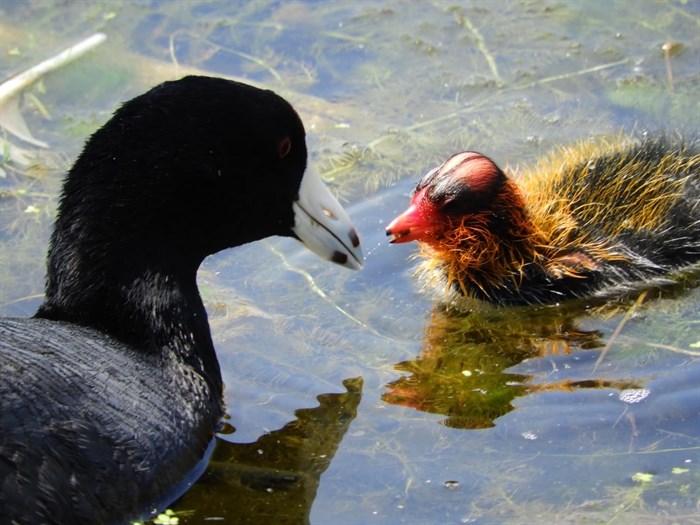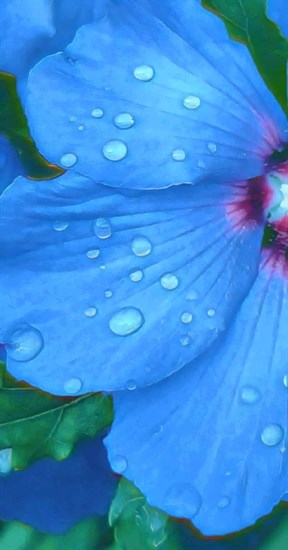Science
Meteor showers to watch out for in 2021: From Perseids, Geminids to Quadrantids – Firstpost
The New York TimesJan 04, 2021 11:00:30 IST
All year long as Earth revolves around the sun, it passes through streams of cosmic debris. The resulting meteor showers can light up night skies from dusk to dawn, and if you’re lucky you might be able to catch one.
If you spot a meteor shower, what you’re really seeing is the leftovers of icy comets crashing into Earth’s atmosphere. Comets are sort of like dirty snowballs: As they travel through the solar system, they leave behind a dusty trail of rocks and ice that lingers in space long after they leave. When Earth passes through these cascades of comet waste, the bits of debris — which can be as small as grains of sand — pierce the sky at such speeds that they burst, creating a celestial fireworks display.
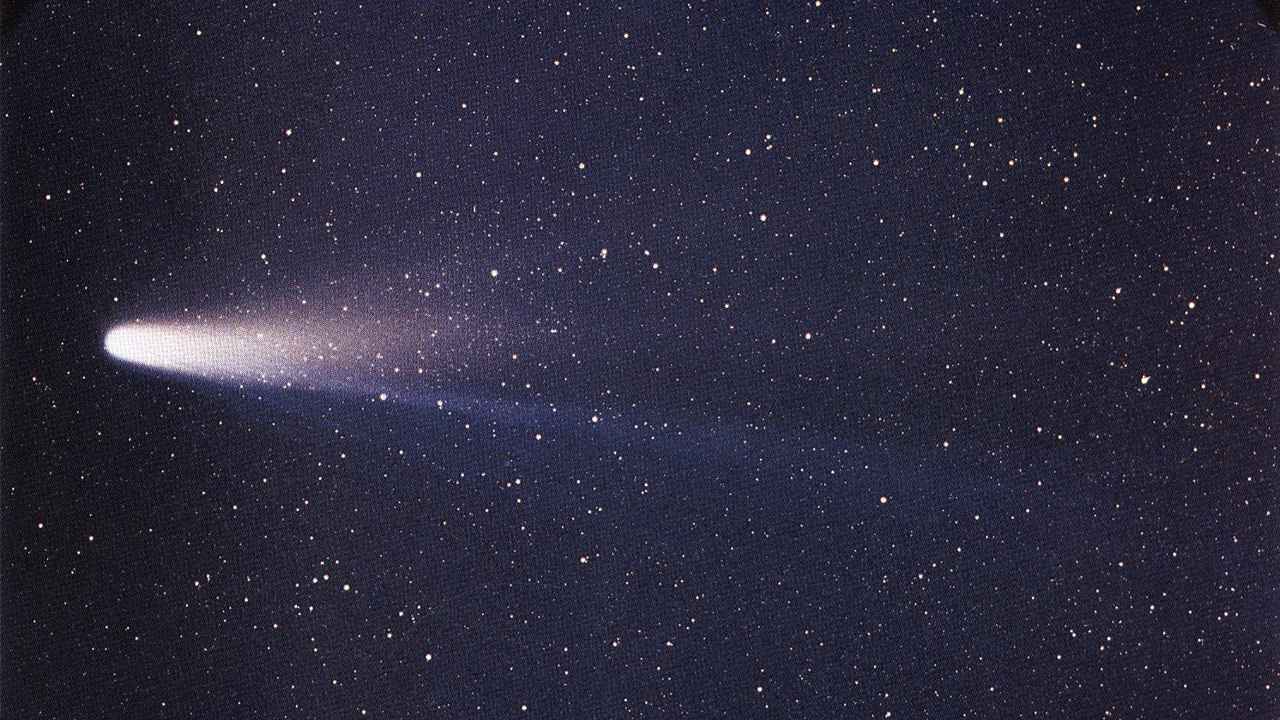
A photo provided by W. Liller/NASA, Hailey’s Comet over Easter Island, March 8, 1986. All year long, Earth passes through streams of cosmic debris. Here’s a list of some major meteor showers and how to spot them. (W. Liller/NASA via The New York Times) — FOR EDITORIAL USE ONLY. —
A general rule of thumb with meteor showers: You are never watching the Earth cross into remnants from a comet’s most recent orbit. Instead, the burning bits come from the previous passes. For example, during the Perseid meteor shower, you are seeing meteors ejected from when its parent comet, Comet Swift-Tuttle, visited in 1862 or earlier, not from its most recent pass in 1992.
That’s because it takes time for debris from a comet’s orbit to drift into a position where it intersects with Earth’s orbit, according to Bill Cooke, an astronomer with NASA’s Meteoroid Environment Office.
The name attached to a meteor shower is usually tied to the constellation in the sky from which they seem to originate, known as their radiant. For instance, the Orionid meteor shower can be found in the sky when stargazers have a good view of the Orion constellation.
How to Watch
The best way to see a meteor shower is to get to a location that has a clear view of the entire night sky. Ideally, that would be somewhere with dark skies, away from city lights and traffic. To maximize your chances of catching the show, look for a spot that offers a wide, unobstructed view.
Bits and pieces of meteor showers are visible for a certain period, but they really peak visibly from dusk to dawn on a given few days. Those days are when Earth’s orbit crosses through the thickest part of the cosmic stream. Meteor showers can vary in their peak times, with some reaching their maximums for only a few hours and others for several nights. The showers tend to be most visible after midnight and before dawn.
It is best to use your naked eye to spot a meteor shower. Binoculars or telescopes tend to limit your field of view. You might need to spend about half an hour in the dark to let your eyes get used to the reduced light.
Stargazers should be warned that too much moonlight and the weather can obscure a meteor shower. You can check the phase of the moon, and your local weather report, to see if you’ll get a good show.
If your local skies don’t light up, there are sometimes meteor livestreams online, such as those hosted by NASA or Slooh.
While the International Meteor Organization lists a variety of meteor showers that could be seen, below you’ll find the showers that are most likely to be visible in the sky this year. Peak dates may change during the year as astronomers update their estimates.
The Quadrantids
Active from 28 December to 12 January. Peaks around 2-3 January.
The Quadrantids give off their own New Year’s fireworks show. Compared with most other meteor showers, they are unusual because they are thought to have originated from an asteroid. They tend to be fainter with fewer streaks in the sky than others on this list.
The Lyrids
Active from 14 April to 30 April. Peaks around 21-22 April.
There are records from ancient Chinese astronomers spotting these bursts of light more than 2,700 years ago. They blaze through the sky at about 107,000 mph and explode about 55 miles up in the planet’s atmosphere. This shower comes from Comet Thatcher, which journeys around the sun about every 415 years. Its last trip was in 1861 and its next rendezvous near the sun will be in 2276.
The Eta Aquariids
Active from 19 April to 28 May. Peaks around 4-5 May.
The Eta Aquariids, also sometimes known as the Eta Aquarids, are one of two meteor showers from Halley’s comet. Its sister shower, the Orionids, will peak in October. Specks from the Eta Aquariids streak through the sky at about 148,000 mph, making it one of the fastest meteor showers. Its display is better seen from the Southern Hemisphere where people normally enjoy between 20 and 30 meteors per hour during its peak. The Northern Hemisphere tends to see about half as many.
The Southern Delta Aquariids
Active from 12 July to 23 August. Peaks around 28-29 July.
They come from Comet 96P Machholz, which passes by the sun every five years. Its meteors, which number between 10 and 20 per hour, are most visible predawn, between 2-3 a.m. It tends to be more visible from the Southern Hemisphere.
The Perseids
Active from 17 July to 24 August. Peaks around 11-12 August.
The Perseids light up the night sky when Earth runs into pieces of cosmic debris left behind by Comet Swift-Tuttle. The dirty snowball is 17 miles wide and takes about 133 years to orbit the sun. Its last go-round was in 1992.
Usually between 160 and 200 meteors dazzle in Earth’s atmosphere every hour during the display’s peak. They zoom through the atmosphere at around 133,000 mph and burst about 60 miles overhead.
The Orionids
Active from 2 October. to 7 November. Peaks around 19-20 October.
The Orionids are an encore to the Eta Aquariid meteor shower, which peaks in May. Both come from cosmic material spewed from Halley’s comet. Since the celestial celebrity orbits past Earth once every 76 years, the showers this weekend are your chance to view the comet’s leftovers until the real deal next passes by in 2061.
The Leonids
Active between 6 November and 30 November. Peaks around 16-17 November.
The Leonids are one of the most dazzling meteor showers, and every few decades it produces a meteor storm where more than 1,000 meteors can be seen an hour. Cross your fingers for some good luck — the last time the Leonids were that strong was in 2002. Its parent comet is called Comet-Temple/Tuttle and it orbits the sun every 33 years.
The Geminids
Active from 4 December to 20 December. Peaks around 13-14 December.
The Geminids, along with the Quadrantids that peaked in January, are thought to originate not from comets, but from asteroid-like space rocks. The Geminids are thought to have been produced by an object called 3200 Phaethon. If you manage to see them, this meteor shower can brighten the night sky with between 120 and 160 meteors per hour.
The Ursids
Active from 17 December to 26 December. Peaks around 21-22 December.
The Ursids tend to illuminate the night sky around the winter solstice in the Northern Hemisphere. They only shoot around 10 to 20 meteors per hour. They appear to radiate from Ursa Minor and come from Comet 8P/Tuttle.
Nicholas St. Fleur c.2021 The New York Times CompanyMete
Science
Exploring ecological networks in a digital world | News | Vancouver Island University | Canada – Vancouver Island University News


Getting to know Samantha Letourneau
By day, Samantha Letourneau is Vancouver Island University’s Canada Learning Bond project lead and Volunteer Tutor Coordinator. She’s also a musician and dancer and for the past two years, she’s been collaborating with Swedish artist Mårten Spångberg, thanks to funding obtained through Crimson Coast Dance, to create a digital art installation that goes live on Friday, April 26. A launch event takes place at Black Rabbit restaurant in the Old City Quarter that night. Samantha is also hosting a creative process workshop on April 27 and 28.
Can you share a bit about your background as an artist and how you got into it?
I have been working in art for a very long time, as a musician and dancer as well as an art administrator and program coordinator. I started music at the age of 11 and dance came later in my life in my early 20s. I always wanted to do dance, but I grew up in a small community in Yellowknife and at that time the only dance classes available were highland dancing, which I was not very interested in.
In my early 20s while living in Vancouver, I took classes in contemporary dance and was fortunate to land a small part in the Karen Jameison Dance company for a piece called The River. The River was about rivers and connection between the reality of a real and physical outdoor river and the different reality of “the river within.” It was both a piece of art and outreach for the community. It included working with the S’pak’wus Slu’lum Dancers of the Squamish Nation. Somewhat ground-breaking for 1998.
From there I was hooked and wanted to do more in dance. I studied a lot and took many classes. Fast forward to now, I have been involved with productions and performances with Crimson Coast Dance for more than 15 years and greatly appreciate the talent and innovation that Artistic Director Holly Bright has brought to this community. She is amazing and very supportive of artists in Nanaimo.
How did this international exchange come about?
The Nordic/Nanaimo exchange is one of the innovative projects Holly created. At the height of the pandemic, funded by BC Arts Council and Made In BC, Crimson Coast Dance embarked on a project that explored the ways in which Nanaimo artists could participate in online exchanges.
Two artists in Nanaimo – myself and Genevieve Johnson – were introduced to artists from Europe and supported through this international exchange. My collaborator, Mårten Spångberg, is a Swedish artist living and working in Berlin. An extension of that exchange is funded by Canada Council for the Arts – Digital Now.
What brought Mårten and myself together – and I quote Mårten here – is “questions around climate change, ecology and the influence contemporary society has on its environments. We are not interested in making art about the ecological crises or informing our audience about the urgency that climate change implies, but instead through our research develop work that in itself proposes, practices and engages in alternative ecologies.”
We share an understanding that art is a unique place, in the sense of practice, activation, performance and event, through which alternative ecologies can emerge and be probed and analyzed.
Tell us about the launch event.
We are launching the digital art installation that Mårten and I created on April 26 at The Attic at Black Rabbit Restaurant. The event is free to attend but people must sign up as seating is limited. I produced video art with soundscapes that I recorded mixing field recordings with voice and instrumentation. Marten explores text, imagery and AI.
My focus is on the evolving and ongoing process of how we communicate with each other and to nature within a digital context.
During our collaboration, Mårten and I talked about networks, though not just the expansive digital network of the internet but of nature. We shared thoughts on mycelium, a network of fungal threads or hyphae, that lately has received much attention on the importance of its function for the environment, including human beings.
Building off this concept, ideas of digital and ecological landscapes being connected emerged. From this we worked both collaboratively and individually to produce material for this digital project. Mårten will be there via Zoom as well and we will talk about this two-year process and the work we created together.
Science
Voyager 1 transmitting data again after Nasa remotely fixes 46-year-old probe – The Guardian


Earth’s most distant spacecraft, Voyager 1, has started communicating properly again with Nasa after engineers worked for months to remotely fix the 46-year-old probe.
Nasa’s Jet Propulsion Laboratory (JPL), which makes and operates the agency’s robotic spacecraft, said in December that the probe – more than 15bn miles (24bn kilometres) away – was sending gibberish code back to Earth.
In an update released on Monday, JPL announced the mission team had managed “after some inventive sleuthing” to receive usable data about the health and status of Voyager 1’s engineering systems. “The next step is to enable the spacecraft to begin returning science data again,” JPL said. Despite the fault, Voyager 1 had operated normally throughout, it added.
Launched in 1977, Voyager 1 was designed with the primary goal of conducting close-up studies of Jupiter and Saturn in a five-year mission. However, its journey continued and the spacecraft is now approaching a half-century in operation.
Voyager 1 crossed into interstellar space in August 2012, making it the first human-made object to venture out of the solar system. It is currently travelling at 37,800mph (60,821km/h).
The recent problem was related to one of the spacecraft’s three onboard computers, which are responsible for packaging the science and engineering data before it is sent to Earth. Unable to repair a broken chip, the JPL team decided to move the corrupted code elsewhere, a tricky job considering the old technology.
The computers on Voyager 1 and its sister probe, Voyager 2, have less than 70 kilobytes of memory in total – the equivalent of a low-resolution computer image. They use old-fashioned digital tape to record data.
The fix was transmitted from Earth on 18 April but it took two days to assess if it had been successful as a radio signal takes about 22 and a half hours to reach Voyager 1 and another 22 and a half hours for a response to come back to Earth. “When the mission flight team heard back from the spacecraft on 20 April, they saw that the modification worked,” JPL said.
Alongside its announcement, JPL posted a photo of members of the Voyager flight team cheering and clapping in a conference room after receiving usable data again, with laptops, notebooks and doughnuts on the table in front of them.
The Retired Canadian astronaut Chris Hadfield, who flew two space shuttle missions and acted as commander of the International Space Station, compared the JPL mission to long-distance maintenance on a vintage car.
“Imagine a computer chip fails in your 1977 vehicle. Now imagine it’s in interstellar space, 15bn miles away,” Hadfield wrote on X. “Nasa’s Voyager probe just got fixed by this team of brilliant software mechanics.
Voyager 1 and 2 have made numerous scientific discoveries, including taking detailed recordings of Saturn and revealing that Jupiter also has rings, as well as active volcanism on one of its moons, Io. The probes later discovered 23 new moons around the outer planets.
As their trajectory takes them so far from the sun, the Voyager probes are unable to use solar panels, instead converting the heat produced from the natural radioactive decay of plutonium into electricity to power the spacecraft’s systems.
Nasa hopes to continue to collect data from the two Voyager spacecraft for several more years but engineers expect the probes will be too far out of range to communicate in about a decade, depending on how much power they can generate. Voyager 2 is slightly behind its twin and is moving slightly slower.
In roughly 40,000 years, the probes will pass relatively close, in astronomical terms, to two stars. Voyager 1 will come within 1.7 light years of a star in the constellation Ursa Minor, while Voyager 2 will come within a similar distance of a star called Ross 248 in the constellation of Andromeda.
Science
iN PHOTOS: Nature lovers celebrate flora, fauna for Earth Day in Kamloops, Okanagan | iNFOnews | Thompson-Okanagan's News Source – iNFOnews
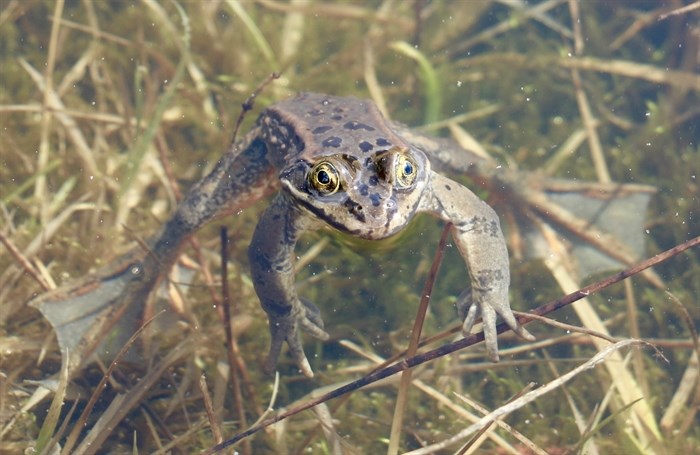

Photographers are sharing their favourite photos of flora and fauna captured in Kamloops and the Okanagan in celebration of Earth Day.
First started in the United States in the 70s, the special day on April 22 continues to be acknowledged around the globe. It’s a day to celebrate the planet and a reminder of the need for environmental conservation and sustainability, according to EarthDay.org.
These stunning nature photos show life in ponds and forests, in skies and on mountains, capturing the beauty and wonder of our local natural environments.
Area photographers shared some of their favourite finds and artistic captures. From frogs to flowers, the great outdoors is teeming with life.
If you have nature photos you want to share, send them to news@infonews.ca.
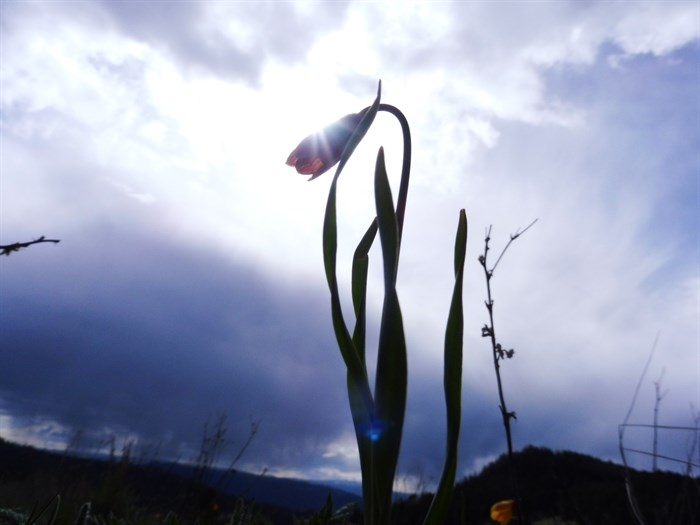



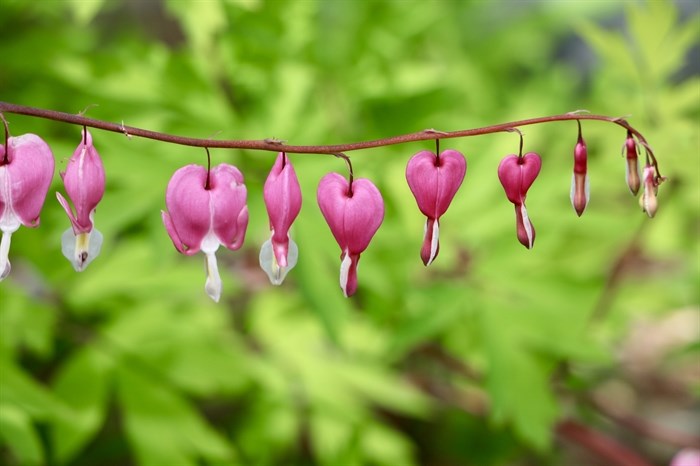

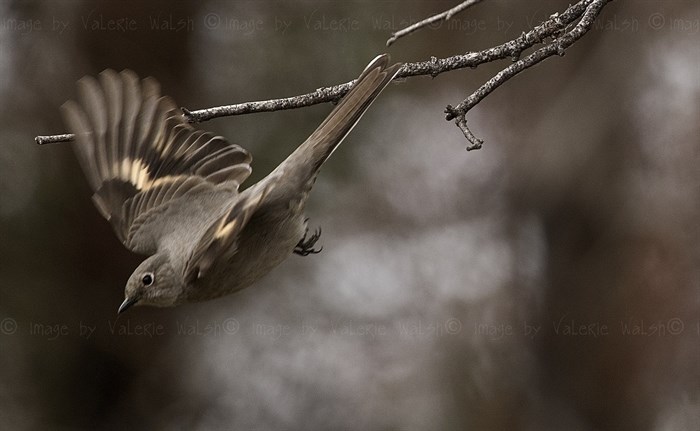

To contact a reporter for this story, email Shannon Ainslie or call 250-819-6089 or email the editor. You can also submit photos, videos or news tips to the newsroom and be entered to win a monthly prize draw.
We welcome your comments and opinions on our stories but play nice. We won’t censor or delete comments unless they contain off-topic statements or links, unnecessary vulgarity, false facts, spam or obviously fake profiles. If you have any concerns about what you see in comments, email the editor in the link above. SUBSCRIBE to our awesome newsletter here.


-



 Politics24 hours ago
Politics24 hours agoFareed’s take: There’s been an unprecedented wave of migration to the West – CNN
-



 Health23 hours ago
Health23 hours agoIt's possible to rely on plant proteins without sacrificing training gains, new studies say – The Globe and Mail
-



 Tech23 hours ago
Tech23 hours agoMeta Expands VR Operating System to Third-Party Hardware Makers – MacRumors
-



 Science23 hours ago
Science23 hours agoNASA's Voyager 1 resumes sending engineering updates to Earth – Phys.org
-
Art5 hours ago
Mayor's youth advisory council seeks submissions for art gala – SooToday
-
Art17 hours ago
Made Right Here: Woodworking art – CTV News Kitchener
-
News22 hours ago
CTV National News: Honda's big move in Canada – CTV News
-



 Science12 hours ago
Science12 hours ago"Hi, It's Me": NASA's Voyager 1 Phones Home From 15 Billion Miles Away – NDTV





